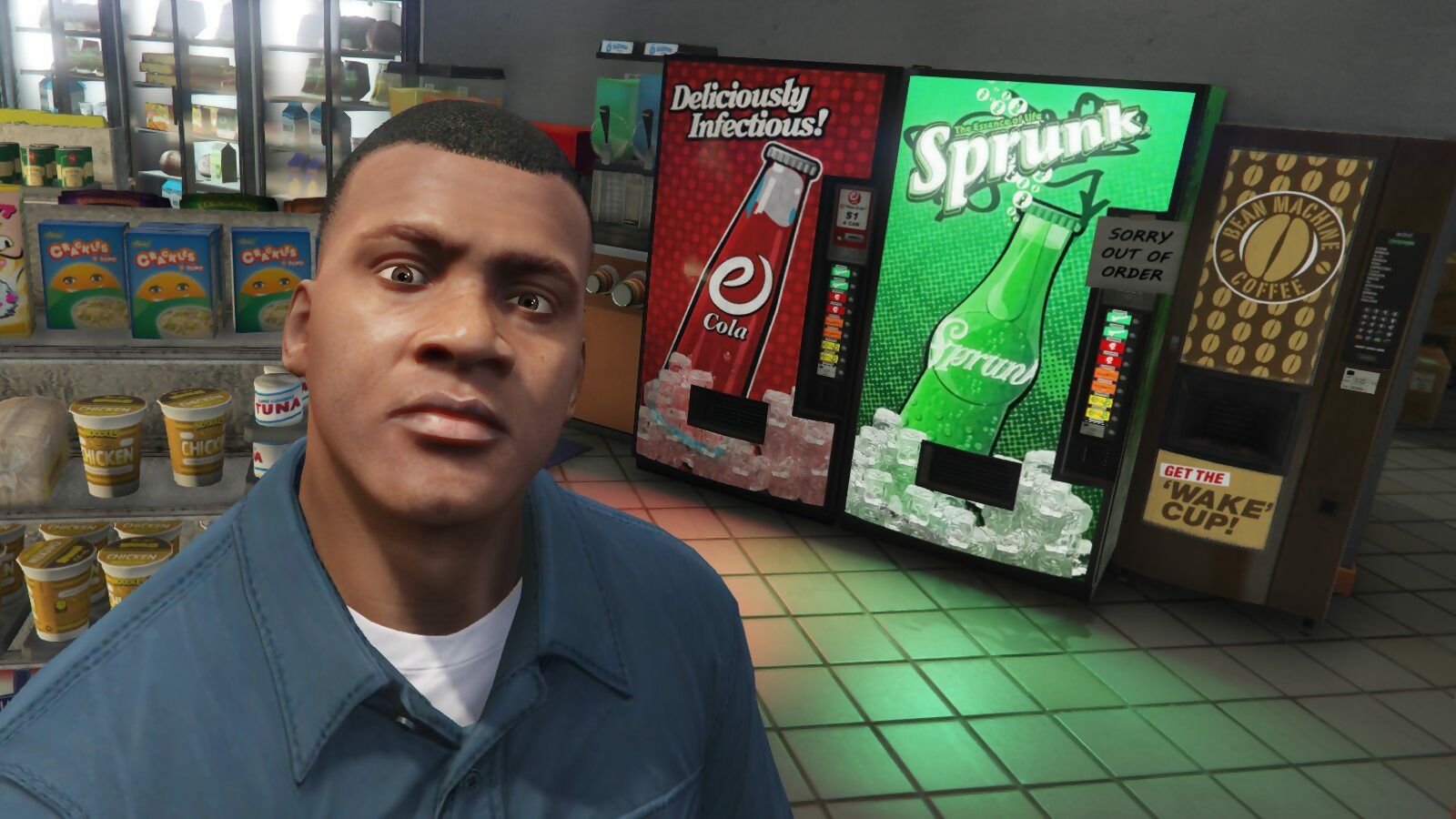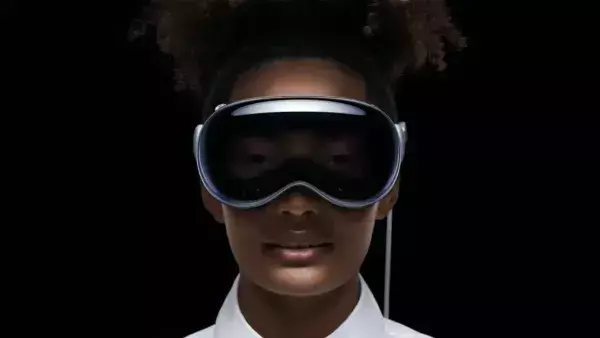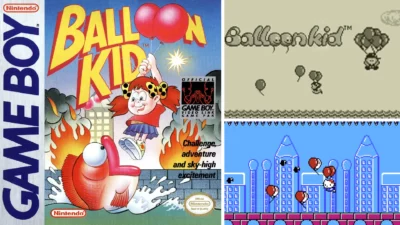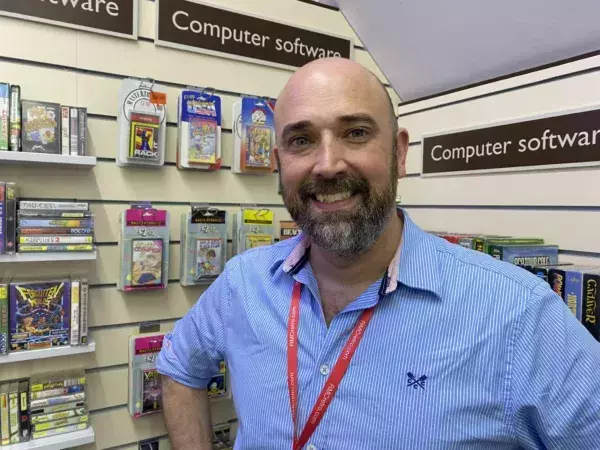
Whether it’s Grog in The Secret of Monkey Island, Nuka-Cola from the Fallout series, or Juicy Raccoon in Resident Evil 3, if you’ve spent much time playing video games, you’ve likely encountered a virtual soda machine or two in your adventures. Some are interactive and dispense drinks or power-ups; others are merely decorative. Some are destructible, showering the player in cans or coins when smashed; others are impervious to assault.
If you happen to be playing Deus Ex: Human Revolution, some can even be telekinetically lifted into the air and hurled at your enemies, crushing them with refreshment.
I’ve thought a lot about drinks machines and where they fit more broadly into game design since I launched The Video Game Soda Machine Project in 2016. The project, like all the best ideas, started out as a joke. I tweeted a screenshot of a Sprinkle Fizz drink machine from Batman: Arkham Knight and suggested someone should compile a list of similar machines from other games.
That someone became me. The collection, housed at vgsmproject.com, has since grown to include screenshots of more than 3000 drinks machines, spanning every major platform and genre. If you vaguely recall seeing a vending machine in the final level of an obscure Game Boy Advance title you played in 2002, there’s a decent chance it’s already archived at The Video Game Soda Machine Project.
As my peculiar collection grew, I started to reflect on what these machines do in terms of game design, what they mean, and why they appear so frequently throughout the history of the medium. After all, it’s not as if they appeared at random in our favourite games; developers made conscious design choices to include them, presumably with a sense of purpose that varied from one context to another.
My goal here is to explore the roles these drinks machines play in game design, suggesting that one of their most critical functions is to help us feel grounded and at home in the virtual worlds of video games.
Product placement and advergames
Perhaps the most obvious role virtual vending machines can play is as a form of product placement for real-world beverages. Memorable examples include Coca-Cola machines in the original Japanese release of Shenmue, Powerade machines in Tony Hawk’s American Wasteland, and SoBe machines in Oddworld: Munch’s Oddysee.
In-game advertising has grown into a multibillion-dollar industry in recent years, and placement deals to feature familiar brands can obviously help underwrite the rising costs of game development.
In other cases, beverage companies themselves have commissioned ‘advergames’ to showcase their brands. The PlayStation curiosity Pepsiman has achieved almost legendary status in gaming circles, while 1998’s Mr. Pibb: The 3D Interactive Game invites players to chug large quantities of Mr. Pibb and vanquish zombies with the ensuing burps. Nevertheless, instances of product placement – perhaps surprisingly – represent only a small fraction of the drinks machines present in games. Players are far more likely to encounter an ersatz Loco-Cola or Bepsi machine than, to borrow from an old Coke slogan, the real thing.
Design purposes
Moving beyond these commercial concerns to matters of design, drinks machines can also contribute significantly to a game’s overall look and feel. A well-placed drinks machine, for instance, can add variety and a pop of colour in an otherwise drab setting.
The aforementioned Sprinkle Fizz machine in Arkham Knight stands out because it’s a brightly lit cotton-candy pink and blue anomaly in the gloomy streets of Gotham City. The flickering light from a drinks machine in a shadowy corridor not only adds dramatic tension to survival horror games like Silent Hill and Resident Evil, but it can also serve as a visual waypoint to guide players through a level.
From a practical standpoint, it’s worth noting that the simple geometry of vending machines makes them relatively easy to implement in both 2D and 3D environments. Pokémon Red and Blue for the original Game Boy serve as illustrative examples of how a few monochrome pixels can effectively communicate the idea of a drinks machine to players.
Additionally, developers have worked soda machines into gameplay in a myriad of ways. The most common is as a means of dispensing health or power-ups to players in the form of beverages. For example, arcade brawler Two Crude (or Crude Buster in Japan) offers players the chance to punch a Power Cola machine at the end of each level to replenish their health bars.

Mega Man Legends originally featured product placement for the Japanese energy drink Oronamin C, cited by fans as a possible explanation for why the game isn’t available for modern consoles.
Downing a Nuka-Cola from a machine in the Fallout series similarly restores the player’s health, albeit with the potential risk of addiction or even radiation exposure. Perk-a-Colas from the Call of Duty series bestow a wide range of power-ups on players, including faster reload time, increased fire rate, and immunity from falling damage. Other titles have employed drinks machines as save points (City Shrouded in Shadow), interior décor (The Sims), and masquerading as extraterrestrial enemies (Alien Storm).
In some instances, designers have even leveraged vending machines as storytelling devices. A soda machine serves as the setting for Do Not Fall; the entirety of the game’s platforming action takes place inside a drinks machine. In NightCry, a survival horror adventure, one of the first hints of the terror that lies ahead is when a drink machine gruesomely devours a supporting character during an early cutscene.
In an eminently meme-able moment from the original Deus Ex, the player overhears a conversation between two NPCs, Anna Navarre and Gunther Hermann, about what Gunther suspects is a secret plot to deprive him of his preferred orange drink from the breakroom machine at UNATCO headquarters. This incidental back-and-forth offers important characterisation, establishing Anna as the pragmatic voice of reason and Gunther as stubborn and conspiracy-minded.
Virtual soda machines also represent opportunities to inject humour into games. Why drink Mountain Dew when you can enjoy parodies like Fountain View (Hitman) or Mountain Screw (Rise of the Triad) instead? Sure, it might be difficult to track down a proper pixelated Dr Pepper, but F.E.A.R. 2 has you covered with its spoofy Professor Doctor machines. Soda machines can also aim for satire with brand names like the “deliciously infectious” eCola from Grand Theft Auto and Halo 2: Anniversary’s straight-to-the-point Sugar Water machine.
Presence and ‘being there’
Taken as a whole, the roles played by drinks machines in game design contribute to an overall sense of what scholars call ‘presence’ – the sense of ‘being there’ in a virtual environment. Drinks machines, and any number of other otherwise mundane environmental objects, help make game worlds feel more natural, real, and complete. In other words, these machines serve as familiar, predictable objects that connect gaming environments to players’ actual lives.
After all, drinks machines are a fixture of everyday life in many countries – particularly in Japan and the United States, which are major centres of the games industry. A drinks machine in the background of a subway platform in Metro Exodus not only makes the setting feel more authentic, but it’s also an object that’s instantly recognisable to players. They know what a drinks machine is, and they can anticipate a range of likely interactions with it.
As a result, they feel present in the space. Whether players consciously realise it or not, familiar environmental objects help ground them in a place that feels like home. It should come as no surprise that nearly every game in The Sims franchise has allowed players to decorate their virtual homes with a variety of vending machines.

Inflict additional damage on your opponents by body-slamming them into a backstage vending machine in WWE SmackDown vs. Raw 2011.
This is particularly important, however, in more fantastical settings. The voodoo-infused piratical backdrop of Mêlée Island in The Secret of Monkey Island or Mass Effect’s futuristic Citadel space station are undoubtedly strange places, but the drinks machines in these environments serve as subtle, yet meaningful, points of connection to orient unmoored players.
Of course, that’s not to suggest drinks machines are the only environmental objects that can create a sense of presence in games – or, for that matter, even the most common examples. Trash cans, lamp posts, and any number of other unremarkable objects can help accomplish the same immersive ends. Rather, The Video Game Soda Machine Project’s ever-growing collection simply suggests that developers have frequently fallen back on soda machines to perform this role.
Welcome to Nuka-Cola World
If soda machines are such effective tools for making virtual worlds feel like the real world, what does that say about the real world? It’s difficult to discuss soda machines in this context without thinking of them as reflections of modern consumerism.
Actual soda machines and the drinks they dispense epitomise several facets of consumer culture – advertising, brand affinity, impulse purchasing, and disposability for starters. Virtual drinks machines take this a step further by offering a commodity with even more dubious value than carbonated sugar water: a collection of pixels representing a beverage.
It’s perhaps telling that game environments only seem ‘real’ to us insomuch as they reproduce the signifiers of a consumer culture that surrounds gamers on a daily basis. Players can easily suspend disbelief when it comes to games featuring dragons, zombies, superheroes, and blue hedgehogs in tennis shoes. But a world without capitalism? That’s a pretty big stretch.

When Bethesda added player-controlled vending machines to Fallout 76, a vibrant economy sprang up around them, selling everything from weapons to armour to (of course) Nuka-Cola.
To quote Sierra Petrovita, a soda-obsessed supporting character from the Fallout series, “I guess sometimes I just take this Nuka-Cola stuff so seriously!” In fairness, sometimes a soda machine is just a soda machine. Still, while virtual vending machines and other environmental objects have the design potential to create an immersive sense of presence and realism in game environments, it’s important to note that these artefacts also come embedded with meanings.
Exploring these values not only holds the potential to tell us more about the games we play, but also about ourselves and the world in which we live.





